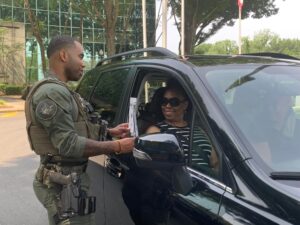By Robyn Sandoval
President, Chief Executive Officer and Owner of A Girl & A Gun
Purchasing a firearm is exciting, but it also can be overwhelming with all the options available. Before making such an important decision, it’s essential to ask yourself a few key questions. Whether you’re a first-time gun owner or a seasoned enthusiast, asking (and answering) the right questions can help ensure you’re making an informed, responsible choice.
- What Will I Use This Gun For?
The first and most important question is about the purpose of the firearm. Guns are designed for a variety of uses, including self-defense, hunting, sport shooting or collecting. The type of gun you choose will largely depend on its intended purpose. Understanding your primary use will guide you toward the right firearm, ensuring that it meets your needs in terms of size, power and capacity.
- Do I Have the Necessary Skills and Knowledge to Purchase a Gun?
Owning a gun requires more than just purchasing it; it’s crucial to ask yourself whether you have the skills and knowledge to handle it safely. Many first-time gun buyers underestimate the amount of training needed to use a firearm responsibly. You might consider taking a gun safety class like NSSF First Shots class before making a purchase—and if not, definitely take one after your purchase. Make sure the first time you fire that gun isn’t in an emergency situation. For women, A Girl & A Gun Chapter Facilitators can also recommend classes and chapter clinics that cover safe handling, maintenance and marksmanship techniques.
- What Are the Mental and Emotional Considerations to Purchasing a Gun?
Gun ownership requires thoughtful planning and diligence, especially if, like most people, you’re buying it for self-defense. It’s important to consider your readiness to make split-second decisions in various situations where you may need to use your firearm.
- In a self-defense scenario, you may have to make quick decisions under high stress. Are you mentally prepared to use a gun if the situation arises?
- Owning a gun means taking responsibility for it at all times. Can you maintain the discipline to secure it properly and ensure it doesn’t fall into the wrong hands?
- Even if you use your firearm lawfully, there are legal and emotional consequences that can arise from using deadly force. Do you understand the potential legal and emotional impact of firing a gun?
Mental preparation is essential for responsible gun ownership. Training classes with a qualified instructor can help you explore different aspects of readiness and help you gain confidence for the journey. Participating in the A Girl & A Gun Book Club can also expose you to different ideas and philosophies that can help you prepare for whatever life brings.
- 4. Where am I going to keep it?
Protecting yourself and your family doesn’t end with bringing a gun into your home. You need to consider how you’re going to securely store it so it can’t be found and mishandled by a child, stolen, accessed by a person at risk of suicide or in any other way fall into the wrong hands. As you’re exploring what kind of gun may be right for you, take a look at the Gun Storage Options for Your Lifestyle infographic from Project ChildSafe to make sure you’re also considering the storage option that’s going to work for you.
- What Are the Legal Requirements in My Area for Gun Ownership?
Gun laws vary significantly by state and even local jurisdiction. Before purchasing a firearm, familiarize yourself with the legal requirements for gun ownership in your area. State laws vary, for example, for private sales. Some states require a permit to purchase and carry concealed. Some allow you to carry the firearm on your person without a concealed carry permit, others do not. Some states even have mandatory storage laws in place. Most firearm retailers can help you research and understand your local gun laws, but be sure to check the requirements thoroughly to ensure you’ll be fully compliant.
- What Are the Costs Associated with Owning a Gun?
Buying a gun is just the beginning. Understanding the ongoing costs of gun ownership can help you budget accordingly.
Some of these costs include your storage and security device, ammunition, range fees and other costs associated with accessories and maintenance. Beyond these, some gun owners also choose to buy self-defense insurance or a legal plan in case a situation arises that involves them in the legal system.
Buying a gun is a significant decision that should not be taken lightly. By asking these critical questions, you can ensure that you’re making an informed, responsible choice that aligns with your needs, abilities and obligations. For a deeper dive, I’d also recommend Project ChildSafe’s “Road to Responsible Gun Ownership” Module, which walks through these kinds of considerations in more detail.
Ultimately, whether you’re purchasing for self-defense, recreation or any other purpose, prioritize safety, secure storage, training and knowledge to make sure your experience as a gun owner is a positive one.
Robyn Sandoval is the President, Chief Executive Officer and Owner of A Girl & A Gun. She is an innovator and leader, who runs the day-to-day operations of the organization, shaping its strategic agenda and sharing the story of how A Girl & A Gun brings to life its purpose: inspiring women to live their best lives through firearms education, competition, and community.


















